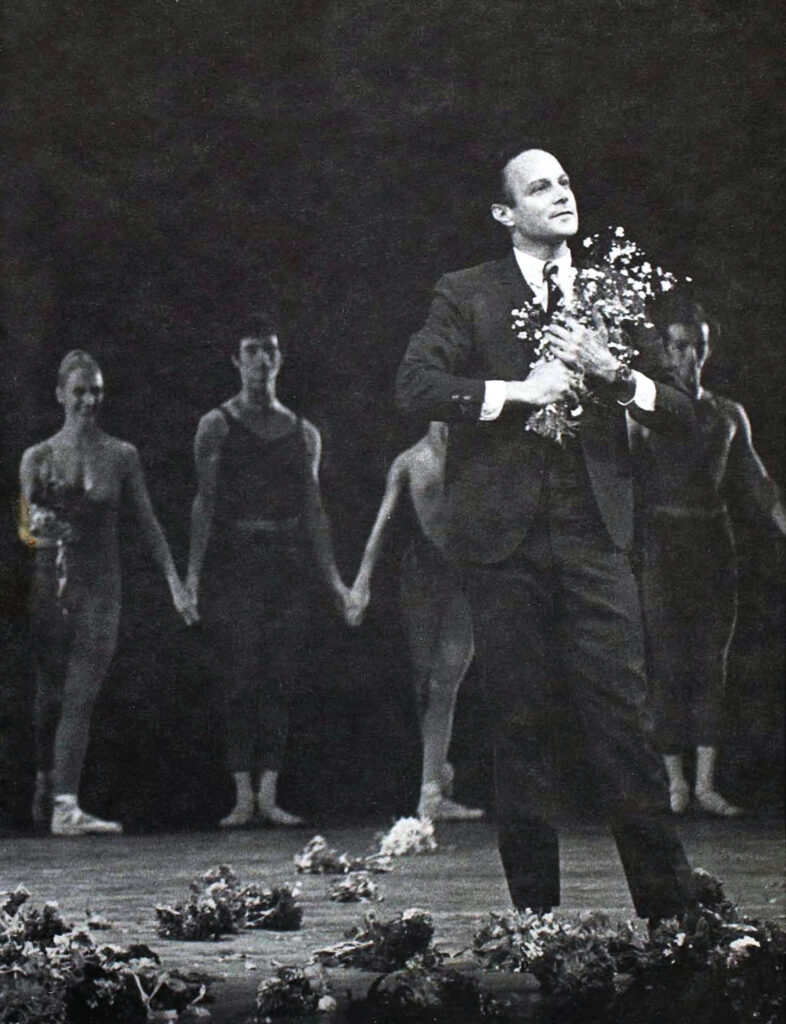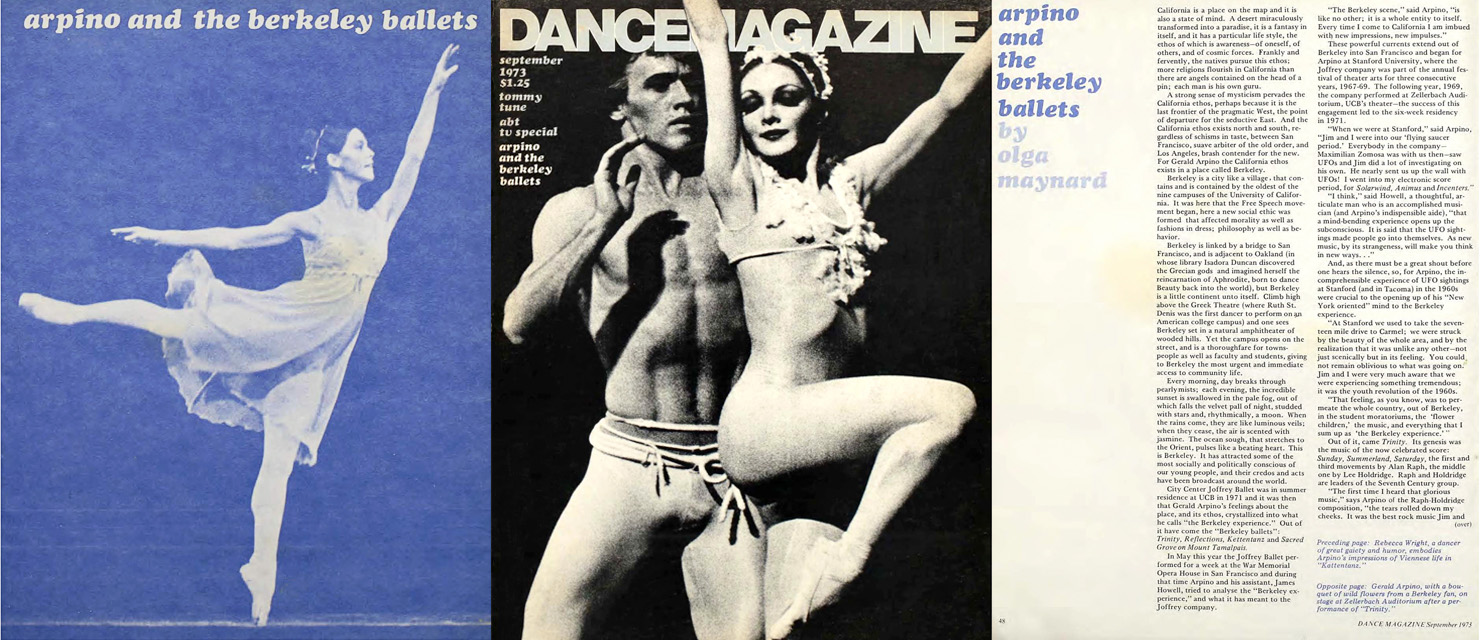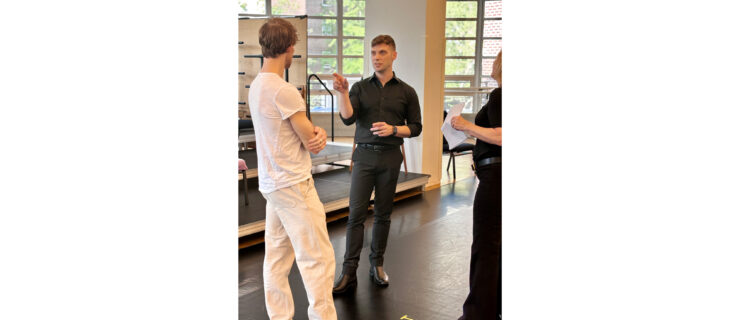TBT: Gerald Arpino on Creating His “Berkeley Ballets”
In the September 1973 issue of Dance Magazine, contributing editor Olga Maynard took a deep dive into what Gerald Arpino had dubbed his “Berkeley ballets,” one result of The Joffrey Ballet’s residencies at University of California at Berkeley.
Trinity was finished and premiered there (to rapturous reception) in 1970; the music for Reflections (1971) was found amongst a stack of secondhand records from a shop on Shattuck Avenue; Kettentanz (1971) was inspired by Arpino’s feeling that “Vienna was a European Berkeley,” as he put it; and Sacred Grove on Mount Tamalpais (1973) was first seeded by a self-professedly out-of-character hike up that local peak.

“Berkeley is my spiritual home,” the choreographer and Joffrey Ballet co-founder told us. “The Berkeley scene is like no other; it is a whole entity to itself. Every time I come to California I am imbued with new impressions, new impulses…. In Trinity and Sacred Grove on Mount Tamalpais I have been able to look at the world through the eyes of the young—to touch the heart of the matter of what it is to be young in this place and time. I could not have done this unless I had gone to Berkeley.” He continued that he and Robert Joffrey had noted the positive impact the environment had on their dancers, as well: “As artists, they are very sensitive to an atmosphere and at Berkeley we all felt, very intensely, the free, open spirit that is the stamp of The Joffrey.”




